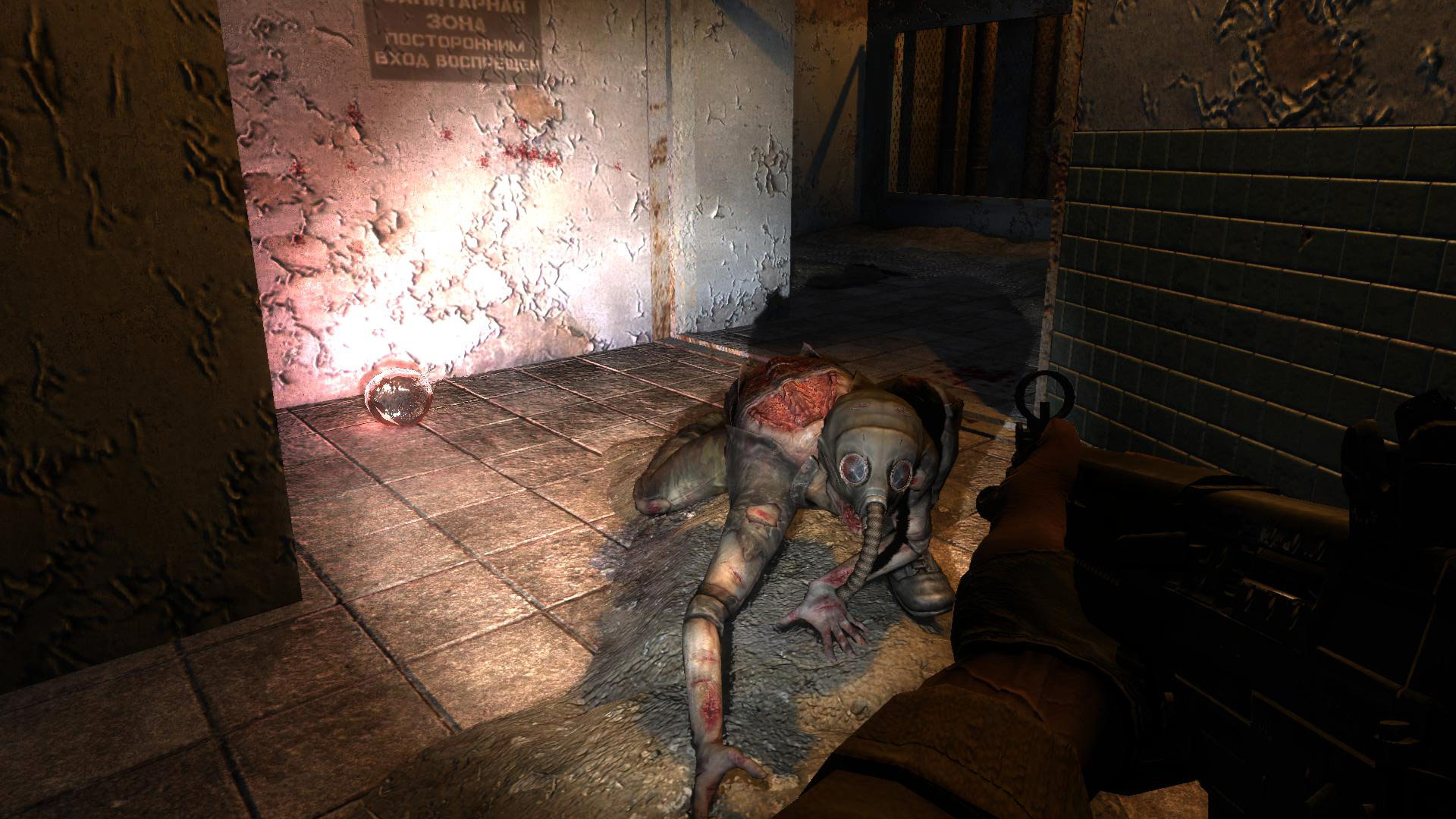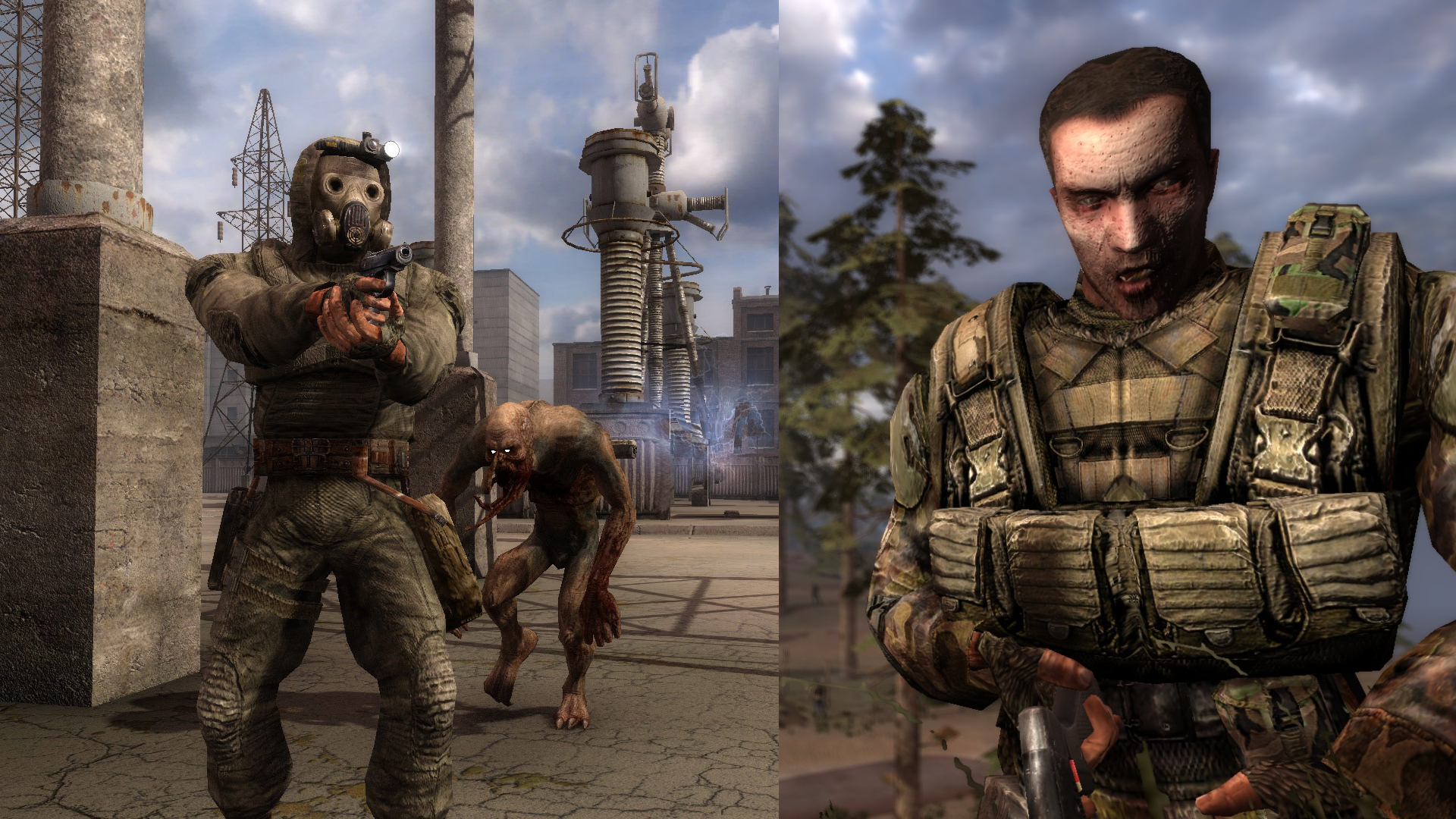15 years after it released, STALKER is having a moment right now – this is why
In the Zone

A rush of wind rattles the bushes by your feet. Your Giger counter’s going nuts, and something’s… wrong with the air in front of you. It’s gathering into a tight, shimmering point. Like it’s forming a fist. You’ve got a Kalashnikov and all the canned meat a Stalker could eat, but you’ve been here before and you know this isn’t a fight bullets can solve. It’s an anomaly. You leg it.
Anyone with a passing interest in the video games of 2007 has this moment seared into their mind’s eye. STALKER: Shadow of Chernobyl did the shooter thing very differently to its peers at the time, dropping you into a massive open space that couldn’t be any dourer if it was rendered in monochrome, giving you a waypoint off into a terrifying horizon, and letting you figure out the rest.
The rest, of course, involved listening to folk songs by makeshift campfires, salvaging weapons and supplies from your environment, navigating the aforementioned anomalies, shooting about seven billion men in dark bunkers by torchlight, and then running for your life at the first sign of a mutated dog. A vivid and uncompromising place, a kind of folkloric Chernobyl, made by a developer who we previously only knew as ‘that Ukrainian studio who make the Cossacks games’.
By Infinity Ward or Valve standards, the lack of polish in STALKER was striking. It wasn’t just the awkward gunplay or the bugs that bothered us at the time, but the fact that this thing had so much potential. First, it teased us with the kind of game we’d wanted to play our whole lives but hadn’t realized until the second we played it, then it dashed that giddy excitement by tripping us up every few minutes. It was like the anomalies had escaped from the wastelands and made it into the game code itself.
And that hurt STALKER. It reviewed well, but there was wide consensus that it could have been a true behemoth, the kind of title that garners the big scores and brings mainstream awareness. In the intervening years, GSC had two more stabs at the premise, STALKER: Clear Sky in 2008 and STALKER: Call of Pripyat in 2010. These weren’t your typical game sequels, but something more akin to the Evil Dead movies – unrelenting attempts to refine and perfect the same fundamental premise. As a trio of releases within four years, it deepened the lore and mapped out a detailed radioactive wasteland, but it probably did more to turn gamers off through over-familiarity rather than finally delivering that perfect STALKER experience.
There has to be something after

Then it went quiet. A splinter group of GSC developers formed 4A games and began the Metro series, taking something of the gritty atmosphere, the horror elements and the ‘just scraping by’ approach to inventory but focusing on Dmitry Glukhovsky’s novels of the same name. Sadly, an animator at 4A, Andrii Korzinkin, died last year while fighting for his country in the Ukraine-Russia conflict.
That conflict also hugely and inevitably affected GSC, whose long-awaited STALKER sequel - now just called STALKER 2 – has been delayed until December 2023. But that’s the least of anyone’s worries, given the enormity of the situation that the entire country faces.
Sign up for breaking news, reviews, opinion, top tech deals, and more.
Perhaps it was that the global media’s eye has been trained on Ukraine for most of this year that got people thinking about STALKER again. That would explain the slight spike in the original game’s concurrent Steam users and Twitch viewers in March 2022. Or maybe it was the release of Road to Vostok, an early access survival shooter set in the moodiest, gloomiest piece of geography between Finland and Russia a STALKER fan could ever hope for.
Road to Vostock is certainly aware of the last 15 years in games, and all the titles since STALKER that made a significant contribution to the service of simulating shivering in some bushes with not quite enough ammo, hoping those much better equipped soldiers over there don’t spot you. DayZ, yes, but also PUBG and The Long Dark, The Last of Us, Fallout 3 and 4 and… wow, we’ve actually been pretty obsessed with this premise over the last couple of decades.
But like all those other games, so much of Vostok owes to the initial blueprint Shadow of Chernobyl laid out in 2007. Hardcore survival elements, no hand-holding. You’re in charge of managing your resources out in the wild, and navigating a vast space. Realism is king when it comes to weapon behavior and damage modeling, but horror elements are allowed, even to the point of supernatural.
Gamma ray

So Vostok’s Early Access release in September reminded us all of that important blueprint and how much so many of us seem magnetized to it. So what we did, en masse, was went and played STALKER GAMMA.
GAMMA’s a collection of mods for all three games in the series, and it basically reworks and remasters the whole lot into a fresh experience. It’s about as user-friendly as you’d expect from a fan-made rework of a famously janky shooter. But it also seems to deliver as close to the perfect STALKER experience as we’ve ever had.
At the time of writing, 50,000 people are live on the STALKER GAMMA Discord right now. That’s about a third of its 146,000 members. It’s a bit of an apples-to-oranges comparison, but there are around 50,000 peak daily users on FIFA 23, Modern Warfare 2, and DayZ on Steam.
Whatever route got all those players playing 2007’s STALKER again right now, it’s happened. And not only does it remind us what a brilliant work that original game was, but it’s also testament to Grok’s modding work. This is not easy source material to work with, but here’s a creator that exactly gets what we want it to do, what we want less of, and why it’s cool to see your character shuffle around when you equip a new backpack, indicating that they’re actually putting it over their shoulders.
This bodes well for STALKER 2, of course. One could hardly imagine more difficult development conditions. Still, it must be heartening in some small way to see such frenzied public appetite for the original games so long after they were released.
You can download the GAMMA modpack here for free. It’s not an easy process, but since when was a Stalker’s life easy?

Ad creative by day, wandering mystic of 90s gaming folklore by moonlight, freelance contributor Phil started writing about games during the late Byzantine Empire era. Since then he’s picked up bylines for The Guardian, Rolling Stone, IGN, USA Today, Eurogamer, PC Gamer, VG247, Edge, Gazetta Dello Sport, Computerbild, Rock Paper Shotgun, Official PlayStation Magazine, Official Xbox Magaine, CVG, Games Master, TrustedReviews, Green Man Gaming, and a few others but he doesn’t want to bore you with too many. Won a GMA once.